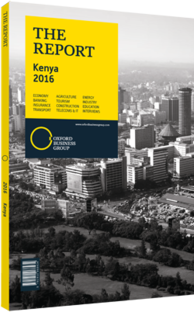Gichiri Ndua, Managing Director, Kenya Ports Authority (KPA): Interview

Interview: Gichiri Ndua
What specifically is being done to reduce congestion at the Port of Mombasa (PoM)?
GICHIRI NDUA: As of today we have about 13,500 containers in the port, while holding capacity stands at around 30,000. This is a result of significant work undertaken over the past few years that has focused on raising the degree of fluidity at the port. First, we added a total of five exit lanes. This has been complemented by the widening of land access, as well as improvements in the management of traffic moving in and out of the port. By encouraging companies to collect and deliver most of their cargo at night, we avoid a lot of congestion.
To ensure future fluidity, a second container terminal is also being developed, the first phase of which is 85-90% complete. When finished in March 2016, it will have the capacity to handle 550,000 twenty-foot equivalent units annually, and we are currently in the process of obtaining an operator.
Additionally, when the Standard Gauge Railway becomes operational around mid-2017, it will have wide-reaching effects on the port and will transport no less than 30% of import traffic, with the possibility of that rising to 50% and beyond depending on capacity. This will alleviate the burden placed on the road infrastructure and reduce the number of trucks coming in and out of the port on a daily basis.
How will the Lamu Port-Southern Sudan-Ethiopia Transport (LAPSSET) project and the Lamu Port affect operations at the PoM?
NDUA: There is no doubt that there is a need for a second commercial port. Mombasa will continue to be the main port for some time to come, but the emergence of the Lamu Port will be extremely beneficial for the transport sector within the whole region. This is because the region that is served by the Mombasa port, and that will be served by the Lamu Port, is growing extremely quickly. Kenya is growing at around 6% every year, and the same is happening in Rwanda, Uganda, Burundi and the Democratic Republic of Congo. Our hinterland cargo routes are only expected to grow further.
The construction of Lamu Port’s first three berths is already in progress, and we are forecasting a construction period of 48-55 months. These three berths will be built with public financing, but down the line, as the port continues to develop and demand for port services increases, we see further developments being pursued through the public-private partnership (PPP) model. We believe that the PPP model can be extremely useful in the construction, modernisation, and expansion of port infrastructure in the country. Beyond the Lamu Port, we are looking at the PPP model to rehabilitate some of the old berths in the Mombasa port, which need to be rebuilt and modernised.
To what extent does piracy still present a challenge to the PoM’s efficiency?
NDUA: We have not had any reported cases of piracy over the past year. As a result, the ships that are coming to the PoM have been able to take a more direct route and no longer have to avoid the Somali waters as much as before. Previously, these longer routes and risk factors meant high insurance premiums, which elevated costs on the routes to and from Mombasa, but we think that since there has been no piracy of late, that it is time for the concerned parties to adjust these rates down. In 2015 we have seen a number of cruise ship arrivals, with cruise ship activity continuing to pick up as more and more people become confident that the issue of piracy is moot. To support this growth, we are now looking at rehabilitating a number of buildings to serve as a reception point for cruise ship arrivals, and additional plans are being considered to construct a dedicated new cruise ship berth as part of the PoM’s expansion.
You have reached the limit of premium articles you can view for free.
Choose from the options below to purchase print or digital editions of our Reports. You can also purchase a website subscription giving you unlimited access to all of our Reports online for 12 months.
If you have already purchased this Report or have a website subscription, please login to continue.

